Land is extremely wet on Conall’s farm, with some water lying in fields. Fieldwork is now beginning to back up, and Conall expects to be very busy once the weather improves, with fertiliser and seed ready to go.
Conall says his winter barley is in great condition. Fifty per cent is KWS Joyau and the remaining 50% is split between Valerie and LG Casting.
The barley received a herbicide of Tower at 2l/ha at the end of last year. It then received its first fertiliser (50kg N/ha) in the middle of February. Some fields received 10-10-20, while others received urea as some fields have very high levels of phosphorus in the soil due to a lot of organic manure being used, especially biosolids.
Twenty per cent of the barley received its second split on 10 March just before the rain began, with another 50kg N/ha of urea being applied.
The KWS Joyau has reached GS30 and is badly in need of a plant growth regulator, while the other varieties have not reached this stage yet.
Conall’s Husky winter oats have not received any fertiliser yet due to the weather and are beginning to struggle because of this.
When the weather improves, the crop will receive all of its fertiliser at once, totalling 125kg N/ha, as well as the crop’s P and K requirements.
Conall did manage to sow his Lynx spring beans on 12 February at 250kg/ha. This ground was ploughed before a pass of a Cambridge roller, with paddles preparing a good seedbed.
A one-pass with a front press then he sowed the crop. Conall has replaced his Suffolk coulters with disc coulters this year as he feels they work better on his heavy clay soils. The beans received a pre-emergence herbicide of Nirvana (4.5l/ha), 250kg/ha of 0-10-20, and 10t/ha of farmyard manure pre-ploughing.
East Cork has received 129mm of rain so far this month making field operations very difficult, but John has managed to spread fertiliser on winter barley and winter wheat.
John’s KWS Tardis and Integral winter barley is looking OK except for some poor headlands following broken weather at planting.
The barley received a herbicide (Tower at 2l/ha, BiPlay SX at 40g/ha) and aphicide (Lamba at 50ml/ha) on 1 February.
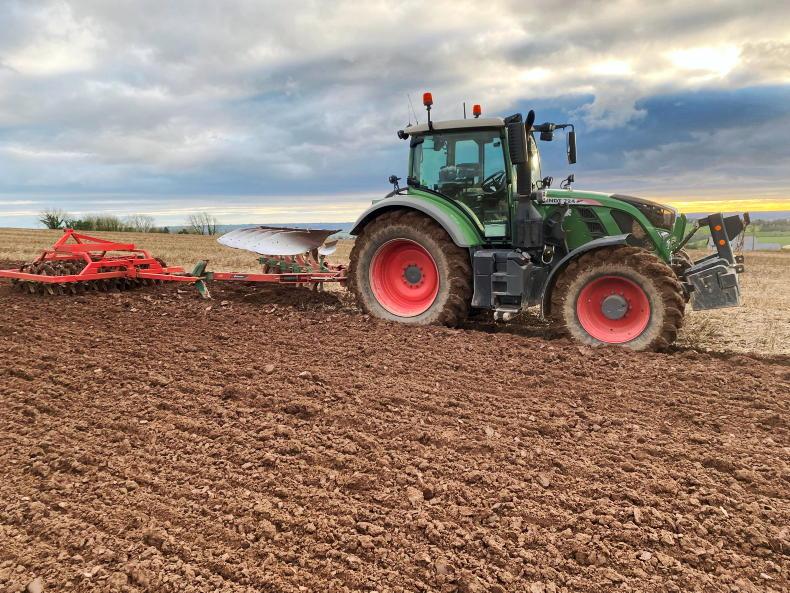
John ploughing for spring beans on 24 February.
The herbicide worked very well, and John was surprised how much the annual meadow grass was stunted by the Tower considering it was well established and tillering. Fertiliser has been completed this week (Monday) and a growth regulator and fungicide will be applied as soon as the crop is nearing GS31.
John is growing KWS Dawsum as a seed crop after winter beans. It wasn’t sown until 1 December due to the weather. Therefore, a high seed rate of 235kg/ha was used, and an establishment rate of 64% has resulted in a plant count of 312 plants/m2, which John is happy with.
It has received the same herbicide and aphicide as the barley, and a compound fertiliser containing all the crop’s P and K and 62kg/ha of N.
The winter oilseed rape (LG Auckland) is looking well on the farm. It received Proline (0.6l/ha) and Epso Bortop (10kg/ha) in early February, when it also received its first split of fertiliser. Some of the more advanced crop has also received a growth regulator of Caryx (1.4l/ha), and is now in the early flowering stage.
John sowed Caprice spring beans at 39 seeds/m2 on 27 February. The crop received a pre-emergence herbicide (Defy 3l/ha, Nirvana 3l/ha) and the beans are just beginning to emerge.
John also has seed and malting spring barley to drill. He is happy to wait until April comes to plant this as it will be on heavy ground.
Despite the rain, land is travelable this week in Down, and Neill was due to be up to date on fertiliser applications by the end of Monday.
The winter barley has come through the winter well, and Neill believes it has great potential. It is a hybrid six-row variety, SY Kingsbarn, drilled at the end of September.
It received an autumn herbicide of Halifax (0.6l/ha) and Hurricane SC (0.125l/ha). The crop received 150kg/ha of Urea + S at the beginning of February and was brought up to 150kg N/ha last weekend. A growth regulator (Palisade at 0.15l/ha, Belcocel at 1l/ha) was applied on Monday this week.
Neill has two varieties of winter wheat this year, Graham and KWS Dawsum. They were planted in mid-October following maize and spring beans. They haven’t received a herbicide yet, but Neill plans to apply Othello (1l/ha) and Minstrel (1l/ha) this week. The wheat received 110kg/ha of Urea + S in late February and was brought up to 108kg N/ha this week.
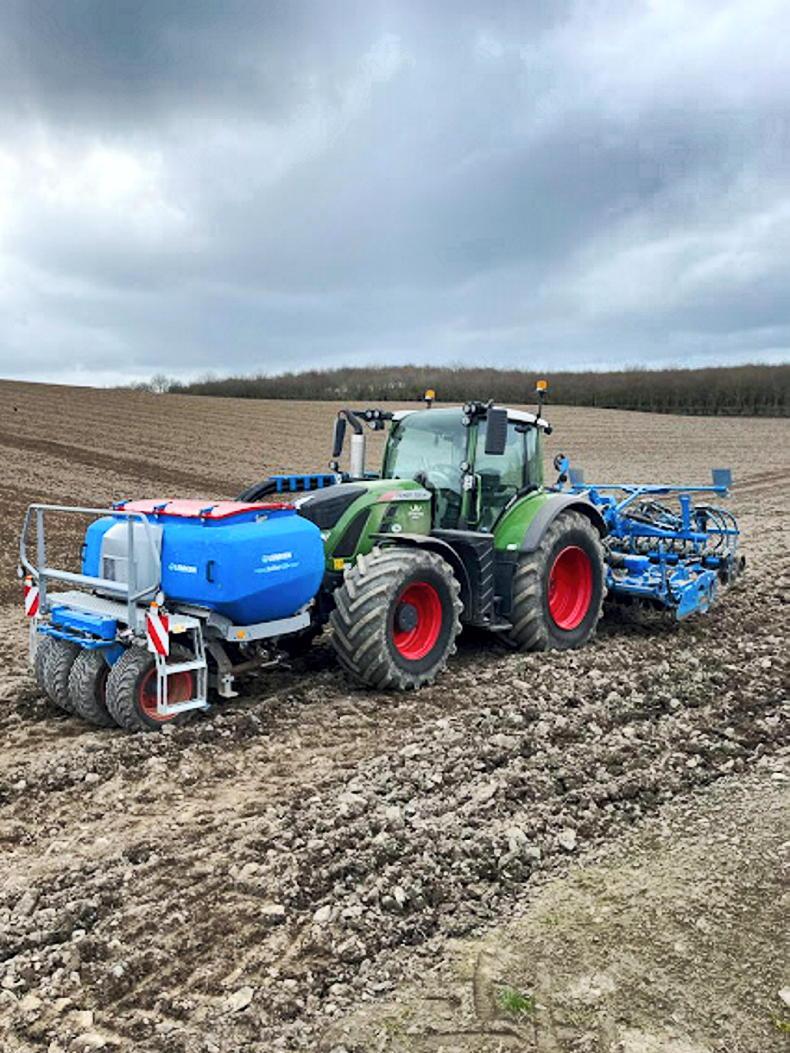
Neill Patterson sowing spring beans
Neill planted 60ac of Lynx spring beans at the end of February into great conditions at 230kg/ha. They were planted at 3in depth to deter crow damage using a Lemken one-pass into ploughed ground. The beans received 170kg/ha of muriate of potash and a pre-emerge herbicide of Stallion (2.9l/ha) and Defy (2l/ha).
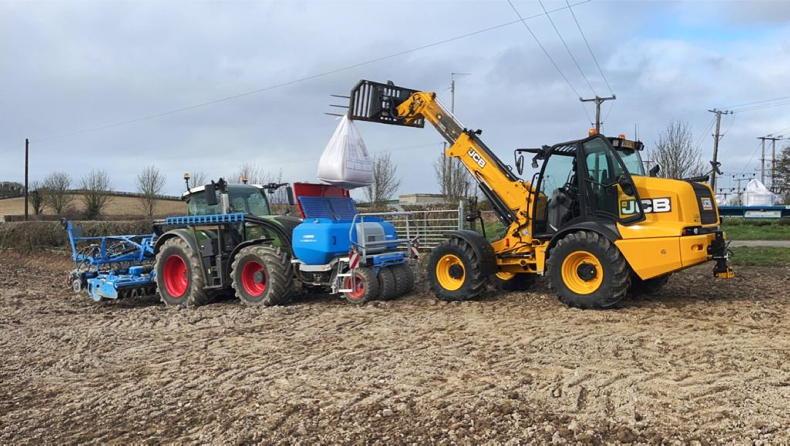
Neill Patterson sowing spring beans
Neill plants a large area of stubble turnips each year after winter barley. This is currently being grazed by local sheep farmers. Neill will apply poultry litter in two weeks’ time before ploughing for forage maize. Neill has done this for years and is very happy with the system. It allows him to fit an extra crop between the barley and maize and he says that the grazing of sheep is great for the land, including for soil fertility, and for cleaning up weeds.
Land is extremely wet on Conall’s farm, with some water lying in fields. Fieldwork is now beginning to back up, and Conall expects to be very busy once the weather improves, with fertiliser and seed ready to go.
Conall says his winter barley is in great condition. Fifty per cent is KWS Joyau and the remaining 50% is split between Valerie and LG Casting.
The barley received a herbicide of Tower at 2l/ha at the end of last year. It then received its first fertiliser (50kg N/ha) in the middle of February. Some fields received 10-10-20, while others received urea as some fields have very high levels of phosphorus in the soil due to a lot of organic manure being used, especially biosolids.
Twenty per cent of the barley received its second split on 10 March just before the rain began, with another 50kg N/ha of urea being applied.
The KWS Joyau has reached GS30 and is badly in need of a plant growth regulator, while the other varieties have not reached this stage yet.
Conall’s Husky winter oats have not received any fertiliser yet due to the weather and are beginning to struggle because of this.
When the weather improves, the crop will receive all of its fertiliser at once, totalling 125kg N/ha, as well as the crop’s P and K requirements.
Conall did manage to sow his Lynx spring beans on 12 February at 250kg/ha. This ground was ploughed before a pass of a Cambridge roller, with paddles preparing a good seedbed.
A one-pass with a front press then he sowed the crop. Conall has replaced his Suffolk coulters with disc coulters this year as he feels they work better on his heavy clay soils. The beans received a pre-emergence herbicide of Nirvana (4.5l/ha), 250kg/ha of 0-10-20, and 10t/ha of farmyard manure pre-ploughing.
East Cork has received 129mm of rain so far this month making field operations very difficult, but John has managed to spread fertiliser on winter barley and winter wheat.
John’s KWS Tardis and Integral winter barley is looking OK except for some poor headlands following broken weather at planting.
The barley received a herbicide (Tower at 2l/ha, BiPlay SX at 40g/ha) and aphicide (Lamba at 50ml/ha) on 1 February.

John ploughing for spring beans on 24 February.
The herbicide worked very well, and John was surprised how much the annual meadow grass was stunted by the Tower considering it was well established and tillering. Fertiliser has been completed this week (Monday) and a growth regulator and fungicide will be applied as soon as the crop is nearing GS31.
John is growing KWS Dawsum as a seed crop after winter beans. It wasn’t sown until 1 December due to the weather. Therefore, a high seed rate of 235kg/ha was used, and an establishment rate of 64% has resulted in a plant count of 312 plants/m2, which John is happy with.
It has received the same herbicide and aphicide as the barley, and a compound fertiliser containing all the crop’s P and K and 62kg/ha of N.
The winter oilseed rape (LG Auckland) is looking well on the farm. It received Proline (0.6l/ha) and Epso Bortop (10kg/ha) in early February, when it also received its first split of fertiliser. Some of the more advanced crop has also received a growth regulator of Caryx (1.4l/ha), and is now in the early flowering stage.
John sowed Caprice spring beans at 39 seeds/m2 on 27 February. The crop received a pre-emergence herbicide (Defy 3l/ha, Nirvana 3l/ha) and the beans are just beginning to emerge.
John also has seed and malting spring barley to drill. He is happy to wait until April comes to plant this as it will be on heavy ground.
Despite the rain, land is travelable this week in Down, and Neill was due to be up to date on fertiliser applications by the end of Monday.
The winter barley has come through the winter well, and Neill believes it has great potential. It is a hybrid six-row variety, SY Kingsbarn, drilled at the end of September.
It received an autumn herbicide of Halifax (0.6l/ha) and Hurricane SC (0.125l/ha). The crop received 150kg/ha of Urea + S at the beginning of February and was brought up to 150kg N/ha last weekend. A growth regulator (Palisade at 0.15l/ha, Belcocel at 1l/ha) was applied on Monday this week.
Neill has two varieties of winter wheat this year, Graham and KWS Dawsum. They were planted in mid-October following maize and spring beans. They haven’t received a herbicide yet, but Neill plans to apply Othello (1l/ha) and Minstrel (1l/ha) this week. The wheat received 110kg/ha of Urea + S in late February and was brought up to 108kg N/ha this week.

Neill Patterson sowing spring beans
Neill planted 60ac of Lynx spring beans at the end of February into great conditions at 230kg/ha. They were planted at 3in depth to deter crow damage using a Lemken one-pass into ploughed ground. The beans received 170kg/ha of muriate of potash and a pre-emerge herbicide of Stallion (2.9l/ha) and Defy (2l/ha).

Neill Patterson sowing spring beans
Neill plants a large area of stubble turnips each year after winter barley. This is currently being grazed by local sheep farmers. Neill will apply poultry litter in two weeks’ time before ploughing for forage maize. Neill has done this for years and is very happy with the system. It allows him to fit an extra crop between the barley and maize and he says that the grazing of sheep is great for the land, including for soil fertility, and for cleaning up weeds.







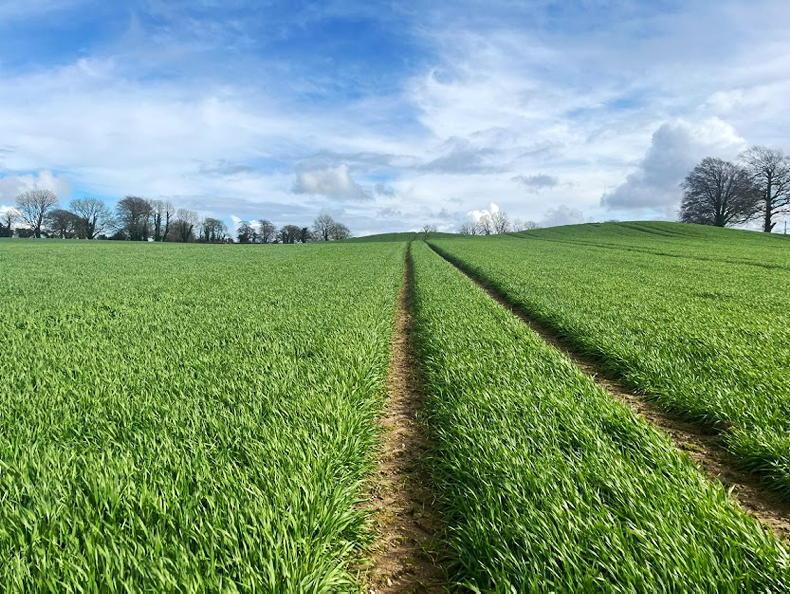
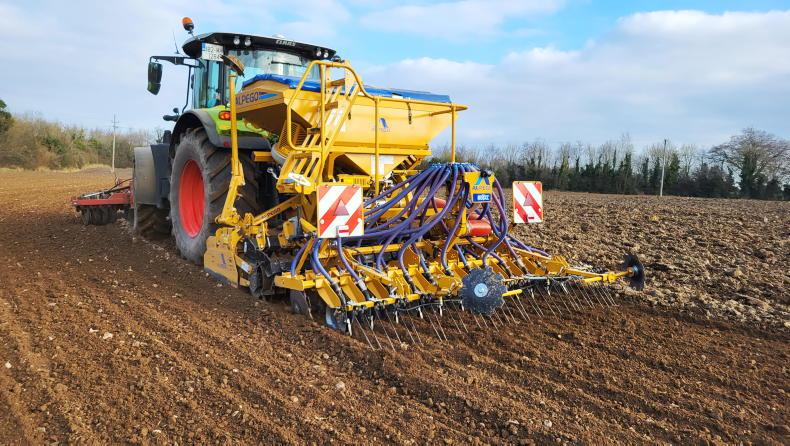

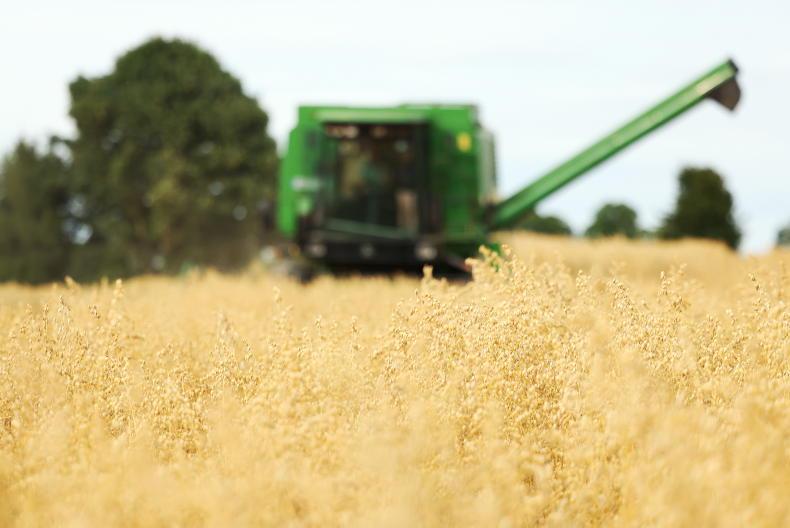


SHARING OPTIONS